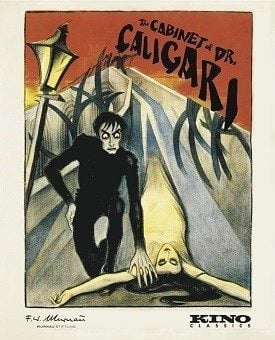One of the most stylistic and influential silent movies ever made and a film whose impact still has far reaching effects almost a century after its first showing, Robert Wiene's The Cabinet of Dr. Caligari is certainly a film for the ages. And now with a striking restoration of its ancient elements, the film has a sheen and clarity that it hasn't had for decades. Those who know this unsettling drama only from highly contrasted or dark 16mm prints or badly transferred home video releases will now be able to see subtleties in the backgrounds and details in facial expressions that definitely give the movie greater resonance than even its most ardent fans might have guessed it possessed.

Studio: Kino
Distributed By: N/A
Video Resolution and Encode: 1080P/AVC
Aspect Ratio: 1.33:1
Audio: English 2.0 DTS-HDMA
Subtitles: English
Rating: Not Rated
Run Time: 1 Hr. 17 Min.
Package Includes: Blu-ray
keep case in a slipcoverDisc Type: BD50 (dual layer)
Region: A
Release Date: 11/18/2014
MSRP: $29.95
The Production Rating: 5/5
Video Rating: 3.5/5 3D Rating: NA
Audio Rating: 4/5
Special Features Rating: 3/5
Overall Rating: 4.5/5
Reviewed By: Matt Hough
Support HTF when you buy this title:





